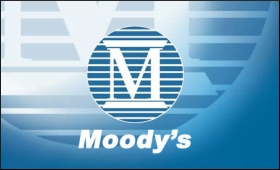|
|
|

|
'Consumption, investment demand recovers'
|
|

|
|
| Top Stories |
 |
|
|
|
SME Times News Bureau | 25 Feb, 2021
Moody's Investors Service has affirmed a stable outlook for
non-financial corporates in India on the back of easing pandemic
restrictions, the government stimulus aimed at boosting consumption and
investment, and a benign funding environment.
Besides, its Indian
affiliate -- ICRA -- has changed its outlook for some sectors, such as
auto and textiles, to stable from negative on expectations of a swift
demand recovery.
"A rising preference for personal mobility
vehicles, along with the government's new voluntary vehicle scrappage
policy, will support automobile demand. In the housing sector, the shift
toward flexible work arrangements combined with tax incentives for
affordable homes will propel demand," said Moody's Associate Managing
Director Vikas Halan.
"Increasing activity in the housing and
auto sectors along with higher infrastructure spending will, in turn,
drive demand in other key industries such steel, oil and gas and
cement."
A joint statement from the two, said prevailing low
interest rates and the government's reforms to boost domestic
manufacturing will support corporates' credit profiles.
According
to ICRA, payment moratoriums, additional funding lines and one-time
restructuring options have enabled corporates in stressed sectors like
textiles, healthcare and auto ancillaries to successfully navigate the
challenging environment.
"Additionally, we believe that low
commodity prices and companies' tight control over their operating and
capital expenses have enabled them to conserve cash and maintain good
liquidity -- although rising commodity prices and the resurgence of
coronavirus cases in some exporting countries remain key risks," said
K. Ravichandran, Executive Vice President and Deputy Chief Rating
Officer at ICRA.
Despite these improvements, India remains
vulnerable to the threat of rising infections and fresh lockdowns, and
to the risk of an uneven or underwhelming economic recovery.
Consequently,
ICRA has maintained a negative outlook on sectors that remain most
impacted by the pandemic in the near to medium term, including the
aviation, hospitality and retail sectors.
Similarly, the outlook for the telecom sector remains negative, reflecting the structural changes it is undergoing.
Furthermore,
Moody's expects the Indian government will drive infrastructure
investment for the next 1-2 years, which will help address
infrastructure constraints and support future private investment.
"Traditional
infrastructure segments like power and transportation will likely
receive the bulk of investments, as will segments with critical
infrastructure gaps, such as healthcare, cold chain, water and
sanitation, over the next 6-12 months."
ICRA has also maintained a
stable outlook for infrastructure-related sectors such as roads and
ports, noting that growth in toll collections and the steady recovery in
cargo growth, along with government measures to improve liquidity for
companies in these sectors, will drive profit and revenue growth.
In
terms of the power sector, Moody's recently revised its outlook to
stable from negative, given the progressive improvement in electricity
demand over the last few months and the expected healthy 10.6 per cent
recovery in India's real GDP growth next year.
As for Moody's
views on the airport sector, monthly domestic passenger numbers had
recovered to above 50 per cent of pre-pandemic levels.
However, a
full recovery is not expected until around 2023, considering the
uncertain timing over the reopening of international borders, potential
risks from a resurgence in coronavirus cases or a delay in vaccine
rollout.
The statement said that growing passenger traffic will
help boost airport revenue, a recovery in credit metrics will likely
take longer for airports with sizable debt-funded capital spending
plans.
"A sustained improvement in economic growth will be key to
boosting highway and port traffic. Steps taken by policymakers,
including large-scale vaccination to contain the pandemic, will be key
to the pace of recovery and growth of these infrastructure segments to
pre-coronavirus levels," said Tyagi.
|
|
|
| |
|
|
|
|
|
|
|
|
|
|
|
|
|
|
| |
| Customs Exchange Rates |
| Currency |
Import |
Export |
US Dollar
|
₹91.25
|
₹89.55 |
UK Pound
|
₹122.85
|
₹118.85 |
Euro
|
₹107.95
|
₹104.3 |
| Japanese
Yen |
₹59 |
₹57.1 |
| As on 29 Dec, 2025 |
|
|
| Daily Poll |
 |
 |
| What is your biggest hurdle to scaling right now? |
|
|
|
|
|
| Commented Stories |
 |
|
|
|
|
|
| |
|